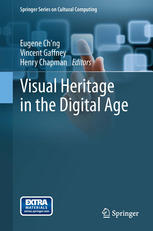

Most ebook files are in PDF format, so you can easily read them using various software such as Foxit Reader or directly on the Google Chrome browser.
Some ebook files are released by publishers in other formats such as .awz, .mobi, .epub, .fb2, etc. You may need to install specific software to read these formats on mobile/PC, such as Calibre.
Please read the tutorial at this link: https://ebookbell.com/faq
We offer FREE conversion to the popular formats you request; however, this may take some time. Therefore, right after payment, please email us, and we will try to provide the service as quickly as possible.
For some exceptional file formats or broken links (if any), please refrain from opening any disputes. Instead, email us first, and we will try to assist within a maximum of 6 hours.
EbookBell Team

0.0
0 reviewsHeritage is everywhere, and an understanding of our past is increasingly critical to the understanding of our contemporary cultural context and place in global society. VisualHeritage in the Digital Age presents the state-of-the-art in the application of digital technologies to heritage studies, with the chapters collectively demonstrating the ways in which current developments are liberating the study, conservation and management of the past. Digital approaches to heritage have developed significantly over recent decades in terms of both the quantity and range of applications. However, rather than merely improving and enriching the ways in which we understand and engage with the past, this technology is enabling us to do this in entirely new ways.
The chapters contained within this volume present a broad range of technologies for capturing data (such as high-definition laser scanning survey and geophysical survey), modelling (including GIS, data fusion, agent-based modelling), and engaging with heritage through novel digital interfaces (mobile technologies and the use of multi-touch interfaces in public spaces). The case studies presented include sites, landscapes and buildings from across Europe, North and Central America, and collections relating to the ancient civilisations of the Middle East and North Africa. The chronological span is immense, extending from the end of the last ice age through to the twentieth century.
These case studies reveal new ways of approaching heritage using digital tools, whether from the perspective of interrogating historical textual data, or through the applications of complexity theory and the modelling of agents and behaviours. Beyond the data itself, VisualHeritage in the Digital Age also presents fresh ways of thinking about digital heritage. It explores more theoretical perspectives concerning the role of digital data and the challenges that are presented in terms of its management and preservation.